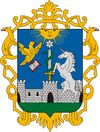Eger
- Eger is also the German name for the Czech town of Cheb and for the Ohře river.
| Eger | |||
|---|---|---|---|
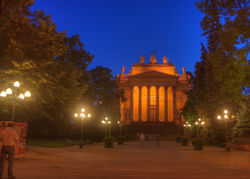 |
|||
|
|||
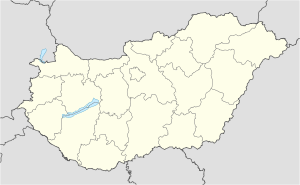 Eger
|
|||
| Coordinates: | |||
| Country | |||
| County | Heves | ||
| Government | |||
| - Mayor | László Habis | ||
| Area | |||
| - Total | 92.2 km2 (35.6 sq mi) | ||
| Population (2009) | |||
| - Total | |||
| - Density | 610.8/km2 (1,582/sq mi) | ||
| Time zone | CET (UTC+1) | ||
| - Summer (DST) | CEST (UTC+2) | ||
| Postal code | 3300 | ||
| Area code(s) | 36 | ||
| Website | http://www.eger.hu/ | ||
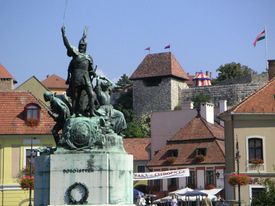
Eger (Hungarian pronunciation: [ˈɛɡɛr]; German: Erlau; Turkish: Eğri ) is a city in northern Hungary, the county seat of Heves, east of the Mátra Mountains. Eger is best known for its castle, thermal baths, historic buildings (including the northernmost Turkish minaret), and red and white wines.
Contents |
Name
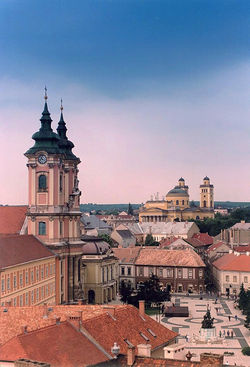
The name Eger is thought to derive from the Hungarian word égerfa (alder tree). In German, the town is known as Erlau, in Latin as Agria, in Serbian and Croatian as Jegar / Јегар or Jegra / Јегра, in Czech and Slovene as Jager, in Slovak as Jáger, in Polish as Jagier, and in Turkish as Eğri. The German name Erlau was adopted in Yiddish and used by the Jewish population of the city.
History
Eger has been inhabited since the Stone Age. Today's Eger was formed in the 10th century by St. Stephen (997–1038), the first Christian king of Hungary, who founded an episcopal see in Eger. The first cathedral of Eger was built on Castle Hill, within the present site of Eger Castle. Eger grew up around its former cathedral and has remained an important religious centre in Hungary since its foundation. The 14th-16th centuries were an age of prosperity for Eger. Winegrowing, for which the town is still famous for, began to be important around that time. The bishops of Eger built beautiful buildings in the city during 18th and 19th centuries.
During the Turkish advance into Central Hungary, Eger became an important border fortress, successfully defended by Hungarian forces in the 1552 Siege of Eger, in the face of overwhelming odds. The castle's defenders, under the command of Captain István Dobó are said to have numbered fewer than 2,000, including women and children, but successfully held off a Turkish army of 80,000 soldiers. The first writer of note to draw on the story was the Hungarian renaissance poet and musician Sebestyén Tinódi Lantos (c. 1510-1556), whose account may have come partly from eye witnesses. Most Hungarians know best the version of this story found in the 1899 novel "Eclipse of the Crescent Moon" (Hungarian "Egri csillagok", lit. "Stars of Eger") by the 19th century Hungarian author Gárdonyi Géza, which is set reading under the Hungarian national curriculum.
However, Eger was attacked in 1596 by a bigger army of Turks, who took over the castle after a short siege. Then followed 91 years of Ottoman rule in which Eger was the seat of a Turkish vilayet (administrative division). Churches were converted into mosques, the castle rebuilt, and other structures erected, including public baths and minarets.
The rule of the Turks in Central Hungary began to collapse after a failed Ottoman attempt to capture Vienna. The Vienna-based Habsburgs, who controlled the rest of Hungary, apart from Transylvania, steadily expelled the Turks from the country. The castle of Eger was starved into surrender by the Christian army led by Charles of Lorraine in 1687, after the castle of Buda had been retaken in 1686.

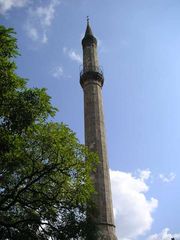
Eger soon began to prosper again. The city was reclaimed by its bishops, which caused many local Protestants to leave. Although the city supported the Hungarian leader Prince Francis II Rákóczi in the 1703-1711 war of independence against the Habsburgs, the Hungarians were eventually defeated by the Imperial army. Soon after that, the city was ravaged by plague. However, immigration into Eger was strong, and the population rose from 6000 to 10,000 between 1725 and 1750. Many new buildings were built in Baroque and later in Zopf and Neoclassical style, including the cathedral, the Archiepiscopal Palace, the County Hall, the Lyceum (now housing the Eszterházy College of Education) and several churches, while others were reclaimed from being mosques.
The 19th century began with disasters: a fire that destroyed half the town in 1800, and a collapse of the south wall of the Castle in 1801, which ruined several houses. Eger became the seat of an archbishopric in 1804, and the church remained in firm control of the city, despite efforts by its citizens to obtain greater freedom. In 1827, much of the city centre was damaged by fire again, and four years later over 200 were killed in an outbreak of cholera.
The inhabitants of Eger took an active part in the revolution in 1848. Even though the revolution was suppressed, the age of landowners and serfs had gone forever, and the municipality gained freedom from the rule of the archbishop in 1854. However, the main railway line between Miskolc and Pest bypassed through the city, which was only reached later by a branch line from Füzesabony.
Economic recovery was slow after World War I, although the 1899 publication of Gárdonyi's "Eclipse of the Crescent Moon" made Eger popular as a tourist attraction and archaeological excavation of the castle resumed. In World War II, the city suffered under the retreating German army and the arriving Soviet army, but it managed to escape major bombardment.
Eger today is a prosperous city and popular tourist destination with a charming Baroque town centre.
Ecclesiastical history
Eger is the seat of the Roman Catholic Archdiocese of Eger, an ecclesiastical province of Hungary founded as a bishopric in 1009 and made a Metropolitan archdiocese in 1804, by Pope Pius VII. The current archbishop-elect, Archbishop Csaba Ternyak, was previously Secretary for the Congregation For Clergy. He succeeds Archbishop István Seregely, who retired because of age. The constituent dioceses of the province were Košice (Kassa, Kaschau), Rožňava (Rozsnyó, Rosenau, now part of Slovakia), Szatmár and Szepes (Zipo, Zipsen).
Wine
Beside its historic sights and its thermal baths, Eger is famous for its wines. In fact, it produces both red and white wines of high quality Eger Wine Region. The famous and traditional varieties of the region are Egri Leányka, Egerszóláti Olaszrizling, Debrői Hárslevelű (whites), and Egri Bikavér (a red). More recently, Chardonnay and Pinot noir wines have appeared. The region's wines are said to bear a resemblance to those of Burgundy. Although the quality of the wines deteriorated in the second half of the 20th century, especially the cuvees, Eger is slowly recovering its reputation as a wine region.
Transportation
Rail
The main train station is located 1,5 km from the city center. MÁV operates fast train services to Budapest and local trains to Füzesabony and Szilvásvárad. There are also smaller stations located near the Castle, and in the Felnémet district, that are served by the Eger - Szilvásvárad local trains.
Coach
The long distance bus stop is in the city center. Buses depart approx. every 30 minutes to Budapest, while Agri Volán operates an extensive network of suburban and long distance buses. Other bus companies also offer connections to a variety of destinations.
Local Bus
Agria Volan also operates a fleet of local buses, serving most parts of the city, although the majority of buses run in North - South direction. Line 12 is the busiest line in the city, and it has stops at the Main Railway Station, the long distance bus station and in the city centre.
Districts of Eger


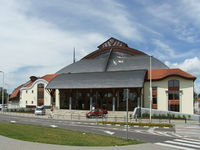

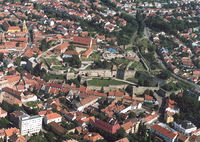
(Note: Most of these districts are historical, but they often appear on maps and street signs.)
- Almagyar - This hill in the Eastern part of the town is one of the smart areas of Eger, near the castle. The southern part contains some of the buildings of Eszterházy College.
- Almár - The northernmost part of the town, it consists mainly of weekend cottages.
- Belváros (City centre) - The centre of Eger is often called "the Baroque Pearl of Europe". Here are located Dobó tér, the main square of the historical town, surrounded by Baroque houses and St. Anthony's Church. Other historic buildings nearby include the Cathedral and the Lyceum.
- Berva is housing estate about 2 km to the NW of Eger
- Castle of Eger - The oldest and most famous part of Eger.
- Cifra hóstya - North of downtown, this part of town is full of small houses and narrow streets. You can find the Firefighters' Museum there.
- Csákó - a suburban area with larger houses, east of the train station.
- Érsekkert (Bishop's Garden) - The largest park in Eger, with sport facilities, a small lake, and a fountain.
- Felnémet - This village was annexed to Eger in the second half of the 20th century and still has a rural character. It1s a dormitory town part of Eger. The parish church (1715-1750s, designed by Gian Battista Carlone, an Italian who settled in Eger) was started by Bishop Gábor Antal Erdődy as a votive church after an outbreak of bubonic plague in 1710, and completed by his successor. It was dedicated to St. Rosalia, a guardian against plague.
- Felsőváros (Upper Town, former Cheboksary Housing Estate) - The largest housing estate of Eger, it is full of four and ten-storied concrete buildings, providing homes for one third of the city's population. There are three high schools there.
- Hajdúhegy - a suburban area similar to Almagyar.
- Hatvani hóstya - The district is split by Highway 25. It contains the stadium and the Reformed church.
- Industrial zone - Several multinational companies have moved into this area east of Lajosváros.
- Károlyváros (Charles Town) - One of the largest districts of Eger, Károlyváros is west of downtown. It contains the High School for the Health Professions, and the Agria Park Shopping Mall.
- Lajosváros (Louis Town) - This district in the southern part of the town has several high schools and student hostels. It consists mainly of detached houses.
- Maklári hóstya, Tihamér - This district is one of the fastest developing parts of the town. It contains public swimming pools.
- Pásztorvölgy - A suburban area.
- Rác hóstya - Another suburban area west from Upper Town.
- Szépasszonyvölgy ("Valley of the Beautiful Woman") - An area of Eger famous for its wines and known for its wine cellars.
- Tetemvár - Another suburban area. The name ("Corpses' Castle") derives from the legend that Turkish war dead were buried here in 1552.
- Vécseyvölgy - A suburban area with a small airfield for sports purposes.
Main sights
(Eger has 17 churches, but tourists usually visit only three or four)
- Castle of Eger
- The Cathedral or basilica, built in 1831-37 to Classicist designs by József Hild, is imposing rather than attractive, but contains some remarkable painting and sculpture. Late morning organ recitals are held frequently.
- Minaret, 17th century. The northernmost Turkish minaret in Europe is 40 meters high and one of only three survivors in Hungary. It can be climbed for a good view of the city centre.
- Város a város alatt (literally "City under the city") a system of cellars near the Cathedral.
- Szépasszonyvölgy ("The Valley of the Beautiful Woman". A valley on the southern edge of Eger which has numerous wine cellars, each with their own wine bar catering to tourists. A tram shuttles tourists to/from Dobó tér in the summer months.
- Dobó tér. The Baroque Minorite Church (1758–67), built to the designs of Kilian Ignaz Dientzenhofer of Prague with original ceiling frescoes by Márton Reindl, is the focal point of the city's most imposing square, flanked by the City Hall and the old priory buildings, part of which contain the Palóc Museum, showing the artefacts of a distinctive regional ethnic community. The square and several of the retail streets around it are pedestrianized.
- The Lyceum (Eszterházy College), designed by József Gerl and Jakab Fellner and built in 1765-85, is a splendid example of the restrained Zopf style. There are three remarkable 18th-century frescoed ceilings, of which only the one in the library is open to the public. Painted by the Viennese artist Johann Lukas Kracker in 1778, it depicts the Council of Trent of 1545-63, which launched the Counter-Reformation. Among the figures depicted are the Reformers Luther and Zwingli, whose "heretical" books are being struck by a bolt of lightning. The beautifully furnished library opened in 1793. There is a camera obscura or periscope at the top of the building, projecting images of the city onto a table.
- Turkish Bath
- The Provost Minor's Palace, 1758, is the finest Rococo building in the city. It also has a fine fresco by Kracker ("The Triumph of Virtue over Sin"), other 18th-century murals, and remarkable 18th-century wrought ironwork.
- Agria Park, a shopping mall which opened in March 2008.
- Archbishop's Garden
- The Fazola gate
- The Minorite Church
- The Serbian Orthodox Church (Rác-templom) is in Zopf style (1784–86). The interior was commissioned from the best Viennese artists by the rich local Serbian community of that time. It is dominated by a breath-taking iconostasis.
- The Cistercian church
- The Archbishop's Palace
International relations
Twin towns — Sister cities
Eger is twinned with:
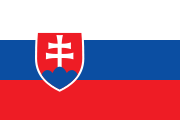 Dolný Kubín, Slovakia
Dolný Kubín, Slovakia Cheboksary, Russia
Cheboksary, Russia Esslingen am Neckar, Germany
Esslingen am Neckar, Germany Gainesville, USA
Gainesville, USA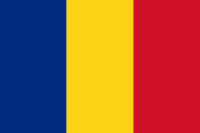 Gheorgheni, Romania
Gheorgheni, Romania Kutná Hora, Czech Republic
Kutná Hora, Czech Republic Mâcon, France
Mâcon, France Pamukkale, Turkey
Pamukkale, Turkey Pori, Finland
Pori, Finland Przemyśl, Poland
Przemyśl, Poland Sarzana, Italy
Sarzana, Italy
People
- See also the related Category:People from Eger.
Trivia
Eger is one of only four Hungarian municipalities which have a Mars crater named after them (in 1976). The other three are Paks, Bak and Igal. Eger was one of the filming locations for the Amazing Race 6.
References
- Attribution
- {{Catholic|wstitle=Agria}
External links
- Official website (English) (Hungarian) (German) (French) (Dutch)
- Eger travel guide from Wikitravel
- egercity.hu Full featured site of Eger with tourist information, maps, programmes (English) (Hungarian)
- A modern traveller's account of his visit to Eger
- Eszterházy College Eszterházy College (Hungarian) (English)
- egervaros.hu
- Aerial photography: Eger
- Eger and its surroundings on old postcards (collection of the city library)
- Eger Photos Sightseeings and sights
- Eger Walking Tours Wine tasting and historical walking tours in Eger and surroundings.
|
|||||||||||||||||
|
||||||||||
